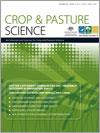Deep drainage under irrigated cotton is not only a waste of a scare resource but also has the potential to cause groundwater levels to rise and cause salinity. Drainage is difficult and expensive to measure directly, so most estimates have relied on modelling or chloride mass-balance calculations. However, direct, accurate measurements of drainage are required to understand drainage processes in cracking clay soils and to provide some certainty about other estimates. A variable-tension lysimeter was installed at 2.1 m depth in a Grey Vertosol under a furrow-irrigated, cotton–wheat rotation. The collection trays were installed without disturbing the overlying soil. A vacuum was applied to the trays and was continuously adjusted to match the matric potential in the surrounding soil at the same depth, thus maintaining the same hydraulic gradient as in the surrounding soil.
The lysimeter was used to measure drainage and other components of the water balance from 2006 to 2011, including three cotton crops, one wheat crop and a long fallow. During this period, two types of drainage were observed. Matrix drainage occurred after an extended period during which rainfall exceeded evapotranspiration. This caused a wetting front to move through the soil over a period of months until it reached the lysimeter and was measured as drainage. Matrix drainage extended over a period of 1 month but at a low rate of ∼0.5 mm/day.
During the cotton season, the earlier irrigations generally caused a sharp peak in drainage of up to 3.5 mm day–1 ∼25 h after irrigation. However, the water content and soil-water potential at 2.1 m were largely unaffected, and in some cases, the hydraulic gradient was upwards while drainage was occurring. This suggests this drainage is caused by irrigation flowing rapidly through the profile bypassing the soil matrix. Later in the season, when soil-water deficits developed in the subsoil at 0.5–1.0 m between irrigations, the peaks in drainage rate became much smaller.
Bypass drainage appears to account for most of the drainage during the measurement period. Apart from lowering the water use efficiency, it is also more unpredictable and difficult to manage. In addition, bypass drainage is less efficient at removing salt from the soil profile, so that a higher leaching fraction may be required to prevent excessive salt accumulation.





